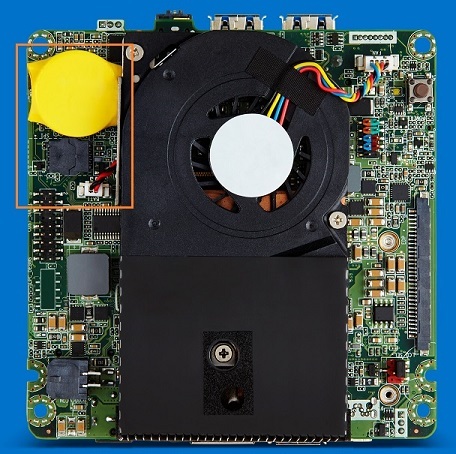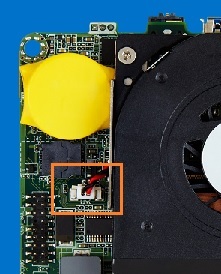A coin-cell battery (CR2032) powers the real-time clock and CMOS (complementary metal-oxide-semiconductor) memory. The battery has an estimated life of three years when your Intel® NUC isn't plugged into an AC power source. When the computer is plugged in, the standby current from the power supply extends the life of the battery. The clock is accurate to ±13 minutes/year.
The CMOS battery is connected to an onboard header on the processor side of the board by a 1x2 connector (Molex 51021-0200).
Example of battery location:

| Notes |
|
If the battery and standby current both fail:
- Date and time values in BIOS might not be accurate.
- The error message CMOS Battery Low appears when the computer starts.
Follow these steps to replace the CMOS battery:
- Disconnect the power cord from the computer or the AC power source (electrical outlet or power adapter).
- Disconnect all peripheral devices attached to the Intel NUC.
- Remove the bottom chassis cover.
- Remove the board from the chassis to access the battery on the processor side of the board.
- Unplug the battery wires from the onboard connector and remove the battery.

- To install the new battery:
- Remove the paper backing from the battery adhesive pad.
- Place the battery onto the board next to the thermal solution. As seen in the image above.
- Connect the wires to the battery connector.
- Reinstall the board in the chassis.
- Replace the chassis cover.
Caution |
|
To find the MSDS certificate for the CMOS Battery, choose your Intel NUC in the "Regulatory certificates and declarations for Intel NUC" section of the Regulatory Information Index for Intel® NUC.